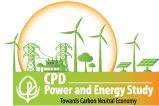Originally posted in Dhaka Tribune on 08 January 2022
A target has been set to generate 5,000MW of wind power by 2030

Bangladesh aims to significantly expand renewable energy sources in its total energy mix in its relentless pursuit of a net-zero carbon footprint.
As one of the key steps in this regard, the Sustainable and Renewable Energy Development Authority (SREDA) has set a target of generating 5,000MW of onshore and offshore wind power by 2030.
Wind energy is power obtained from the force of wind using turbines. The country currently generates only 2.9MW of wind power.
According to SREDA officials, the huge target is being considered as an immediate option for the next few years in compliance with the government’s commitment to promoting renewable energy — given the fact that an American agency recently pegged the country’s wind power generation potential at 30,000MW.
The US Department of Energy’s National Renewable Energy Laboratory (NERL) conducted a study — Assessing the Wind Energy Potential in Bangladesh: Enabling Wind Energy Development with Data Products — from June 2014 to December 2017.
The United States Agency for International Development (USAID)-funded study concluded with the observation that “preliminary results demonstrate that, for wind speeds of 5.75 to 7.75 meter per second (m/s), there are more than 20,000 square kilometers of land with a gross wind potential of over 30,000MW”.
About the wind power potentials, SREDA chairman Mohammad Alauddin said the organization will now conduct a detailed study on the basis of the NREL’s findings to get the bankable data “so that potential investors can invest in the sector and make their investment commercially viable”.
“A proposal on wind power’s potential will be placed before the Power, Energy and Mineral Resources Ministry to incorporate the target in the proposed Integrated Energy and Power Master Plan (IEPMP) up to 2030, now being framed with the help of Japan International Cooperation Agency (JICA),” he told UNB.
The NREL study said, “Although this estimate is not realistic, when proper filters are applied to screen out undesirable land for wind development, it suggests that Bangladesh’s 10% renewable target by 2021 is achievable”.
“The preliminary technical potential analysis calculates gross potential and does not filter out already-developed land, environmentally sensitive land, or land unsuitable for other reasons,” it added.
The NERL study found the wind potentials at nine locations across the country, having an average wind speed of 5 to 6 meters per second at a height of over 60 to 80 meters above ground level (AGL) — Lalpur of Natore in Rajshahi, Chandpur, Sitakunda and Parkay Beach in Chittagong, Gouripur in Mymensingh, Madhupur Tea Estate in Habignj, Dacop in Khulna near Mongla port, Inani Beach in Cox’s Bazar, and Badarganj in Rangpur.
Of these, initiatives have already been taken to set up wind power plants at three places — at Dacop, Inani Beach and Chandpur, each having 50 MW capacity. A contract has already been awarded for the Dacop location.
“Exploiting the new and efficient technology, we’re now planning to set up a good number of wind power plants by 2030,” Alauddin said, referring to the NREL study that found the wind speed at six meters per second at a higher hub height.
Energy experts, however, are skeptical about the country’s wind power’s potential and its commercial viability.
Eminent energy expert Dr M Tamim said that the proposal for generating 5,000MW of power from wind is “not only highly ambitious, but highly subjective as well”.
“Which technology will be used, where it will be used and what will be the cost of electricity and who will be the investors in such projects… these are big questions,” said the Professor of Petroleum and Mineral Resources Engineering at BUET.
Sreda statistics show that the country currently generates a total 777.24MW of electricity from different renewable sources.
Of this, 543.25MW is generated from solar energy, 2.9MW from wind, 230MW from hydro, 0.69MW from biogas, and 0.4MW from biomass, while the country’s total power generation capacity is about 25,000MW.
Shariar Ahmed Chowdhury, a professor at United International University, said that wind energy is very sensitive. “If data lacks 10% accuracy, it has a big impact and there may be a variation of 30-40% in the final output,” he said.




